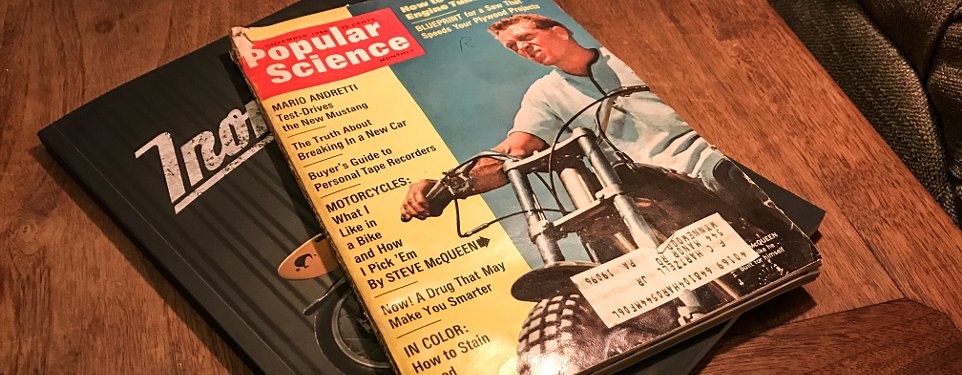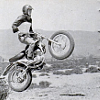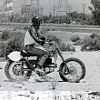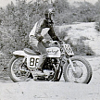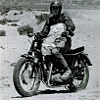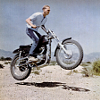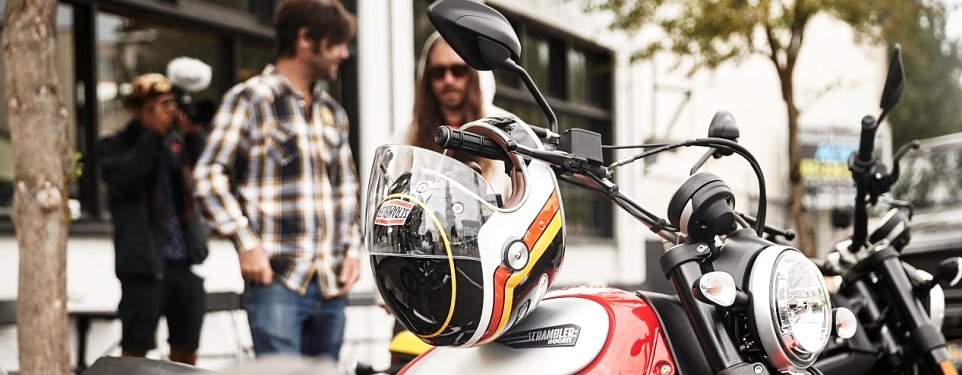Lately there has been a lot of talk about scramblers.
Historically, "scramblers" were bikes originally designed for street use whose owners customized them for better performance off-road. OEMs caught wind of the craze and began producing scramblers of their own (sound familiar?). These bikes, which provided the foundation for the modern dirt bike, are often viewed through rose-colored glass. But how good were they really?
A few weeks ago, I found myself walking home from the bar with the help of a few bourbon cocktails. I rarely find myself out past the witching hour these days, so I was surprised to stumble upon an all-night used bookstore. (A better description would be a dimly lit, abandoned warehouse, stuffed with enough aging books and magazines to keep the Fire Marshal awake at night.) Having grown up in a home littered with motorcycle magazines, it should come as no surprise that my current house is decorated in a similar fashion. I immediately gravitated to a stack of crumbling Popular Science magazines dating to the 1960s.
The prize selection of the night was an issue from November 1966 with Steve McQueen on the cover sitting atop an old desert scrambler. The title of the article, “Motorcycles: What I Like in a Bike and How I Pick ‘Em,” only told half the story. As it turned out, Steve had taken the good folks of Popular Science out to one of his favorite desert spots to test the hottest off-road machines of the day.

Lately, we have seen "scramblers" being released in a variety of shapes and sizes from nearly every OEM on the market. What's old is new again, in a big way. My biggest takeaway from reading this article was to put modern scramblers and ADV bikes in perspective by directly comparing them to the bikes they are based on. Steve explained that all of the bikes were tested on a six-mile loop consisting of “cow trailing with a top end close to 70 m.p.h.; a sand wash with some rocks (to be avoided at all costs); sand dips of the washboard type with a depth of two feet maximum; several high-speed jumps of the TT variety; and a lot of fast trailing with quick changes, both up and down and side to side.” As you read along, think about how a modern "scrambler" or ADV machine would fare in similar terrain.
In no particular order, the following are the top six dirt bikes of 1966 as evaluated by Steve McQueen, along with my thoughts about bikes of today. I've added the prices, adjusted for inflation, to provide perspective about what your money would get you now as compared to 1966.
The BSA Hornet
Price: $1,215
Adjusted for 2017: $9,050.74
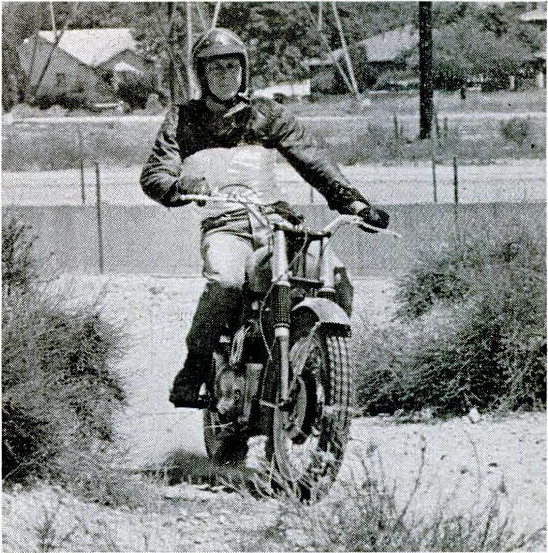
The Norton-Metisse
Price: $2,000
Adjusted for 2017: $14,898.33

The Triumph Bonneville TT Special
Price: $1,274
Adjusted for 2017: $9,490.24

The Honda 450 (Super Sport?)
Price: $1,100
Adjusted for 2017: $8,194.08
In the article, it was a bit unclear exactly which Honda motorcycle Steve was testing. The Honda 450 Scrambler wasn’t introduced until 1968, as it was originally introduced in 1967 as the Honda CB450 Super Sport. As this issue came out at the end of 1966, I am guessing it was the original 1967 version that McQueen had his hands on. Steve had very little to say about the Honda, good or bad, but he did commend it for its electrical system, suspension, and powertrain, stating, “It’s a keen bike, for the money.” Some things don't change.
The Montesa La Cross
Price: $815
Adjusted for 2017: $6,071.07

The Greeves Challenger
Price: $920
Adjusted for 2017: $6,853.23

So what have we learned about Scramblers?
Mainly, we've learned that we should all be damn thankful we live in 2017, where we have access to a slew of relatively affordable machines that are bulletproof and reliable compared to the bikes of yesteryear. The next time I see a guy whining on Facebook that he's never buying a Triumph again because his Tiger Explorer swallowed a valve at 43,000 miles, I am just going to respond with a link to this article. I'm also going to remind him that Peter Egan got his start at Cycle World by writing an article about how his brand-new Norton swallowed a valve on its first trip away from home.
Could you imagine if Egan swore off British bikes after that? He would have had a very short career and we would all be worse off for it.
If you would like to read the original article, but can’t picture yourself perusing used bookstores at 2 a.m. after a night of drinking, you’re in luck. Google Books has the entire November 1966 issue of Popular Science available online for your reading pleasure. Make sure to take some time to enjoy the old-time advertisements while you’re at it.




